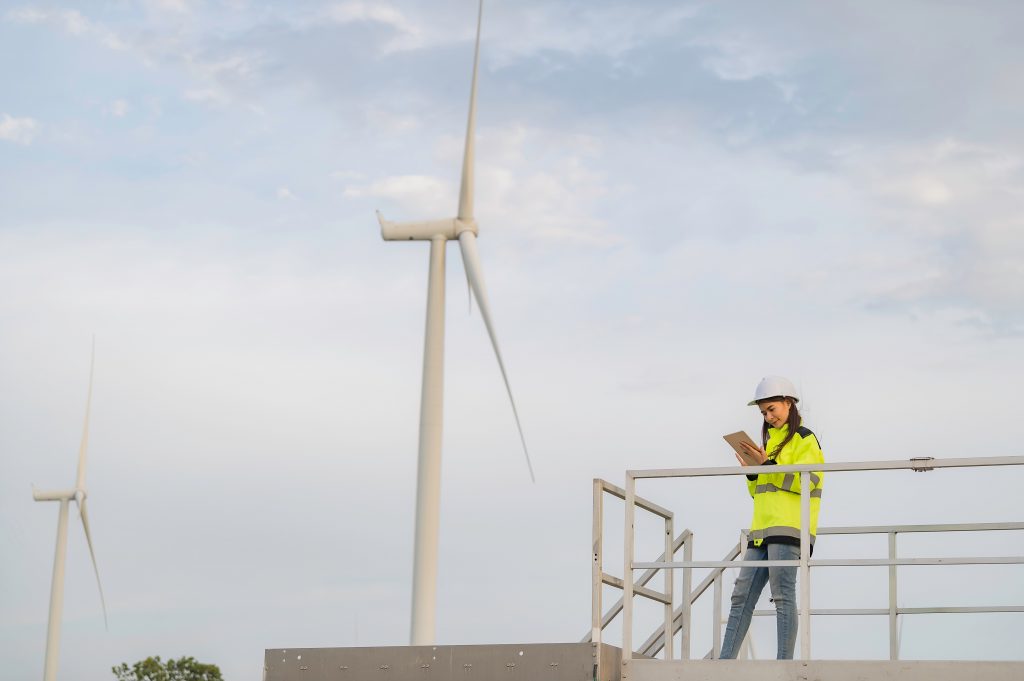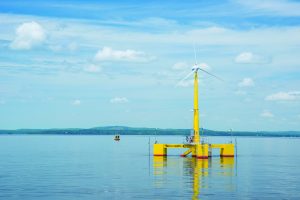Woman-identifying workers make up about a quarter of the workforce in the energy and power sectors. There is a similar pay discrepancy between genders in the renewable energy field, including the solar and wind sectors. In 2019, the International Renewable Energy Agency (IRENA) reported women made up only 32 percent of the renewable energy workforce, with the bulk of their roles in administrative positions. While this is more favorable than the gender gap in the total energy industry (where women only account for 25 percent of the workforce), significant imbalances remain.

The following are some important statistics about women in power and energy workplaces.
- Women account for 25 percent of workers in the overall energy sector despite making up 47 percent of the total national workforce.
- The International Energy Agency (IEA) reports female employees in the energy sector earn almost 20 percent less than their male counterparts despite accounting for skill levels of ability, education, and previous experience.
- Within the energy industry, female-identifying workers make up 32 percent of the renewable energy workforce and 22 percent of workers in the oil and gas sector.
- Women have the highest representation in the solar energy sector, accounting for 40 percent of the workforce. Most of the female-held jobs in the solar field are administrative positions.
- In the wind-energy sector, women account for 21 percent of the workforce. Like in the solar field, most of the positions held by women in wind energy are administrative.
While the gender gap has improved over the decades, there remains room for diversification in the energy industry. That said, it’s important to point out that women have already made significant contributions to the energy sector. SaveOnEnergy celebrates the accomplishments of women in power and energy industries.
Despite historically accounting for a smaller percentage of the workforce, women have broken ground as leaders in the energy industry throughout the years.

The U.S. Office of Energy Efficiency & Renewable Energy (EERE) highlights many female leaders and innovators in the energy industry throughout history. These women contributed to the growth of the clean-energy field, and their work helped create a promising future of innovation. Here’s a quick recap of some important efforts women have made in the energy industry over time:
- In the 1850s, Eunice Foote’s experiments with atmospheric gasses led to the discovery of the greenhouse effect. One of Foote’s male colleagues presented her findings in 1856, and Foote did not receive credit for her research until 2011.
- In the 1930s, Mária Telkes’ research into solar technology led to her invention of a solar-powered desalination kit to make seawater drinkable for pilots and sailors during World War II. She later made many other significant contributions to the solar industry, including her creation of a solar-powered home heating system.
Women continue to drive the energy sector forward. From improving the electrical grid to developing new batteries for electric vehicles, there’s no shortage of female innovators.
Top energy careers for female workers
IRENA estimates that by 2050, there will be roughly 29 million jobs in the renewable-energy sector. As renewable energy such as wind and solar become a more common power source in the U.S. and the job market grows, more women may seek employment in the renewables industry.
As the energy industry and job market evolve, workers in the industry become more valuable. Increased access to STEM resources and education can help women break into fast-growing, high-paying career opportunities in the energy industry.
IRENA recommends policy changes to help close the gender gap in the energy workforce. Equal training opportunities, improved parental leave, and flexible work hours are a good place to start. Salary transparency and career growth opportunities help support networking and mentorship for women in this field.
Solar energy careers for women
Solar panel installers are one of the fastest-growing trade careers in 2024, according to the U.S. Bureau of Labor Statistics. Between 2022 and 2032, solar panel installer employment is expected to increase by 22 percent, with an average projection of 3,500 job openings each year. This job has a median salary of just more than $45,000 annually.

IRENA’s 2022 study on women in solar industry careers revealed that solar panel manufacturing positions had the highest rate for employing women (47 percent). At the time of the report, women only accounted for 12 percent of solar panel installer positions.
While there are many opportunities for improvement in closing the gender gap, the solar industry offers significant promise. The solar industry provided approximately 4.3 million jobs in 2021, accounting for a third of all renewable energy job opportunities.
Wind energy careers for women
The wind energy industry offers similar opportunities for women in energy careers. In 2023, the U.S. Bureau of Labor Statistics noted that wind-turbine service technician is the fastest-growing career, estimated to increase by 45 percent between 2022 and 2032.
According to a 2020 study by IRENA, women represent 21 percent of the wind-energy workforce. Most female-held positions were administrative (35 percent) and non-STEM (20 percent) jobs. IRENA noted the main barriers to entry for women in the wind-energy industry include cultural and social norms, outdated hiring practices, a lack of awareness about opportunities, and unfavorable workplace policies, among others.
Other energy careers for women
Career opportunities exist for women outside the solar and wind industries, too. Civil engineers, chemical engineers, and information system managers are typically among the highest-paying roles in the overall energy industry.
Based on 2021 information from Data USA, women account for:
- 16.6 percent of civil engineers.
- 19.2 percent of chemical engineers.
- 28.5 percent of information system managers.

Women in STEM
Women make up a varying percentage of the science, technology, engineering, and mathematics (STEM) workforce. For example, the Pew Research Center noted women account for the majority of workers in health-related jobs but are underrepresented in computing and engineering roles. According to BestColleges.com, only 27 percent of jobs across all STEM fields are held by women. (BestColleges.com is also owned by SaveOnEnergy’s parent company, Red Ventures.)
According to the U.S. Bureau of Labor Statistics, STEM careers will increase by 10.8 percent from 2022 to 2032. The median annual wage is approximately $53,000 higher than non-STEM occupations.
Considering the anticipated increase in overall STEM job prospects, the number of opportunities for women in STEM occupations will likely continue to grow.
Scholarships for women in STEM
Women interested in expanding their training and education in STEM fields can apply for a variety of scholarships to help fund ongoing education. BestColleges.com offers a list of scholarships specifically designed for women interested in STEM.
While women tend to make up less of the workforce in the energy sector, they have consistently contributed to advancing energy technology throughout history and into the present day. Female industry leaders have opened doors for future leaders, narrowing the gender gap, creating invaluable research, and improving the quality of the energy industry.
Editor’s note: Unfortunately, the studies and surveys referenced in this article did not include or reference participants who identify as transgender, nonbinary, gender nonconforming, genderqueer, agender, or genderless.

































